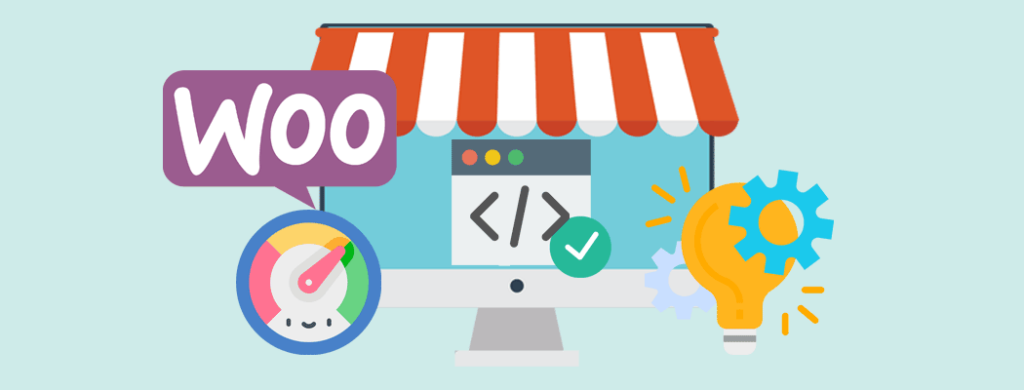Wondering about WooCommerce checkout blocks pros and cons? Well, WooCommerce is undergoing a significant evolution with its move toward a block-based architecture, powered by React. This shift promises greater customisation and performance, allowing store owners to create seamless checkout experiences without needing advanced coding skills.
By leveraging modern JavaScript frameworks, WooCommerce developers – like those contributing to WordPress Core – are reshaping online shopping with responsive layouts, real-time form validation and smoother user flows.
The result?
A more flexible, future-proof checkout process designed for modern eCommerce, ensuring site stability and scalability, while keeping the user experience front and centre.
But what exactly are the pros, cons and limitations for your business? Below, you can find details on what you need to know from WooExperts.
If you need a refresher on this topic, check out our guide WooCommerce Checkout Blocks: Quick Guide to Modern eCommerce.
Why WooCommerce Checkout Blocks Shine: Key Pros
WooCommerce’s block-based checkout system offers a game-changing approach to customising your online store’s purchasing process. Whether you’re just diving into eCommerce or already have an established digital presence, these flexible blocks empower you to craft an intuitive and modern checkout experience. Below, we’ll explore three standout benefits: enhanced customisation, improved user experience and mobile optimization.
Enhanced Customisation
One of the most compelling features of WooCommerce checkout blocks is their drag-and-drop simplicity. Instead of wrestling with complex coding, you can rearrange and modify the checkout flow in real time. This flexibility means you can adapt your storefront to match evolving trends or customer needs without investing in costly development hours.
According to the official WooCommerce Blocks documentation, this block-based architecture is designed to offer granular control over each checkout component, from payment methods to shipping details. Every element can be positioned or styled based on your brand’s identity.
In other words, you have the power to fine-tune the user journey, keeping your buyers focused on completing their purchase instead of getting lost in a cluttered interface. Such customisation can lead to higher conversion rates, as customers find the checkout process more relevant and trustworthy.
Improved User Experience
A smoother, more intuitive user experience (UX) is another key advantage of WooCommerce checkout blocks. Implemented using React, these dynamic components offer features such as inline form validation, which delivers real-time feedback to shoppers. This means if a customer mistypes their email address or forgets a shipping detail, the system alerts them immediately. That way there’s no more waiting until the final submission stage to discover an error.
This proactive feedback loop significantly reduces cart abandonment and fosters a sense of confidence in the checkout process. In line with best practices highlighted by the Nielsen Norman Group, immediate, clear feedback goes a long way in building user trust.
Streamlining interactions minimizes friction and encourages customers to complete the transaction. As a result, store owners who adopt checkout blocks often report fewer abandoned carts, a higher rate of successful purchases and improved overall customer satisfaction.
Mobile Optimisation
Finally, the inherently responsive design of WooCommerce checkout blocks ensures that your store’s checkout process looks and functions flawlessly on any device. As more consumers turn to smartphones for online shopping, mobile optimisation is no longer optional – it’s a must-have.
According to data from Statista, mobile sales continue to grow exponentially worldwide, making it critical for WooCommerce store owners to provide a streamlined, pocket-friendly experience.
By leveraging block-based components, you don’t have to retrofit your checkout flow for each screen size; the architecture automatically adjusts to any device. This responsiveness cultivates a consistent brand experience, whether shoppers are browsing from their desktop, tablet or phone. Reducing pinch-and-zoom interactions and preventing layout breakage keeps customers engaged, helping them glide through the checkout process effortlessly.
Taken together, enhanced customisation, improved user experience and mobile optimisation form a powerful trifecta that puts WooCommerce checkout blocks at the forefront of modern eCommerce solutions. By leveraging these advantages, you can create a checkout environment that both reflects your brand’s identity and meets the evolving expectations of today’s online shoppers.
Potential Pitfalls of WooCommerce Checkout Blocks
While WooCommerce checkout blocks offer a host of exciting benefits, they’re not without challenges. For many store owners and developers, these pain points revolve around plugin compatibility and the learning curve required to master the Gutenberg editor.
Understanding these drawbacks upfront can help you devise strategies to overcome them, or decide whether now is the right time to switch.
Plugin Compatibility Issues
One of the biggest hurdles facing those who adopt WooCommerce checkout blocks is the risk of running into plugin compatibility problems. Because not all WordPress or WooCommerce plugins have been updated to support the block-based system, you may encounter unexpected behavior when you pair them together.
For instance, certain extensions that handle specialised checkout features like discount logic, shipping calculators, or membership controls might conflict with the newer block architecture, causing checkout errors or visual inconsistencies.
According to WooCommerce’s developer documentation, ongoing updates aim to broaden compatibility. However, it’s wise to take a look at plugin reviews or consult with developers before fully integrating an extension. WordPress.org also recommends testing updates in a local or staging environment to ensure everything runs smoothly. If a critical plugin isn’t yet compatible with the block system, you could be forced to hold off on adopting checkout blocks entirely, or invest in custom development to bridge the gaps.
Learning Curve
Another aspect to consider is the learning curve. If you’ve been relying on the Classic Editor in WordPress or a page builder like Elementor for years, the Gutenberg block editor can feel like stepping into new territory. While the interface is designed to be user-friendly, the array of configuration panels, block arrangement options and advanced settings can appear overwhelming at first glance.
Store owners transitioning to block-based checkout often need to train themselves – or their teams – in the new workflow. This involves not just learning the technicalities of dropping and dragging blocks, but also understanding Gutenberg’s unique layout strategies, styling options and how to revert to previous versions if something goes amiss. For busy entrepreneurs juggling multiple tasks, the additional time investment can be daunting.
Still, the WordPress developer community provides a wealth of resources to ease this transition. Resources like Learn WordPress offer comprehensive tutorials on Gutenberg, while discussions in the WooCommerce community can shed light on best practices.
If you’re pressed for time, you can also hire a WordPress specialist or WooExpert agency such as us here at Progressus to streamline the process. Please get in touch for more details.
In short, while WooCommerce checkout blocks can unlock innovative possibilities, they come with certain complications. Before adopting them, take the time to assess your current plugins for compatibility and prepare to navigate the Gutenberg interface. This proactive approach will help you sidestep frustration and ensure a smoother transition into the future of eCommerce.
Key Limitations to Keep in Mind
Even though WooCommerce checkout blocks promise a modern, user-friendly experience, they aren’t universally plug-and-play. Two primary limitations – theme compatibility and performance considerations – can make or break your store’s checkout experience.
Theme Compatibility
If your site runs on an older theme, you may need to update its underlying templates or styles for the new checkout blocks to render correctly. According to the WordPress Theme Handbook, outdated code can conflict with contemporary block features, resulting in design inconsistencies or layout issues.
In many cases, additional development work is required to align older themes with the latest WordPress and WooCommerce standards. Without these updates, your checkout layout might break, leading to user frustration and lost sales.
Performance Considerations
When considering WooCommerce checkout blocks pros and cons as well as for eCommerce, in general, performance is everything. If you or your developers implement checkout blocks haphazardly by piling on too many customisations or neglecting general site optimisation, you risk slowing down page load times. Research from Google’s Web Vitals initiative reveals that even slight delays can significantly impact user engagement and conversion rates.
Bloated scripts, oversized images, or inefficient code in your checkout flow can drag down overall site performance, pushing impatient shoppers toward competitors. While WooCommerce checkout blocks themselves are designed to be performant, improper usage or excessive third-party integrations can undermine those built-in advantages.
Ultimately, these limitations highlight the importance of a well-planned implementation strategy. Before rolling out checkout blocks, audit your theme to ensure compatibility and confirm that your site’s performance optimisation measures, like caching and image compression, are in place.
Final Thoughts: WooCommerce Checkout Blocks Pros and Cons
WooCommerce checkout blocks present a powerful way to refine your eCommerce experience, offering enhanced customisation, improved UX and mobile responsiveness. Yet, they carry risks like plugin compatibility, learning curves, theme upgrades and performance pitfalls. Evaluating these factors thoroughly ensures you maximize benefits while mitigating potential challenges.
A bit of extra preparation upfront or hiring WooExperts can save you from headaches (and financial losses) down the road. For details, check out WooCommerce Plugin Development and API Integration as well as WooCommerce Website Development. You can also reach out to us if you’d like to request a quote from WooExperts.
What are your WooCommerce checkout blocks pros and cons? What customisations are you looking to build? Let us know in the comments below.


